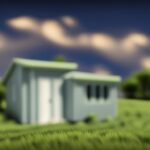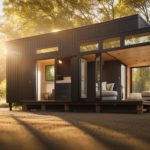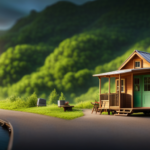Beginners Guides
How Much Will It Cost To Build A Tiny House
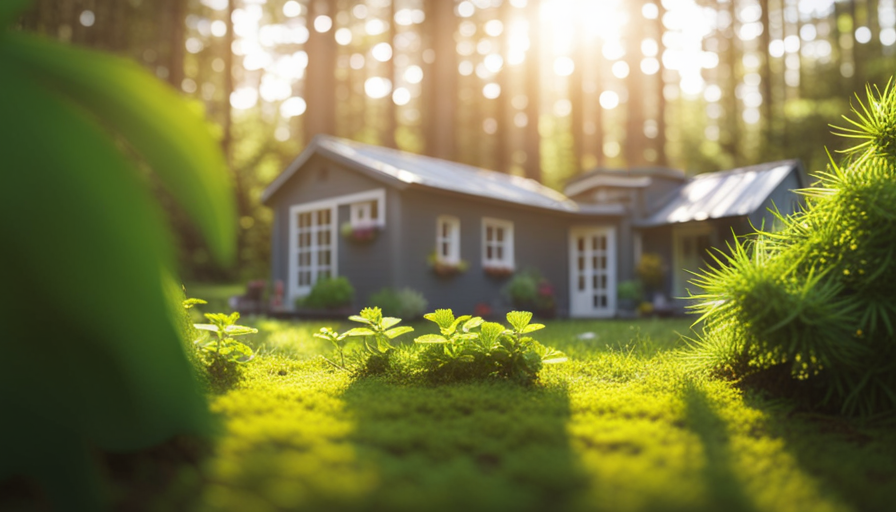
Once upon a time, the idea of securing a cozy and budget-friendly living space felt nearly impossible. However, times have indeed shifted, my dear friends. In this moment, I’m excited to explore the realm of tiny houses with you all and tackle the burning question on our minds: what’s the price tag on constructing one of these?
Now, before you start picturing a cramped and uncomfortable living space, let me assure you that tiny houses are all about maximizing efficiency and minimizing costs. In this article, we’ll explore the various factors that contribute to the price tag of building a tiny house, from materials and labor to permits and financing options.
So, if you’re ready to embark on an adventure of affordable living without sacrificing style and comfort, buckle up and let’s dive into the nitty-gritty details of building your very own tiny house.
Key Takeaways
- Factors contributing to the cost of building a tiny house include materials, labor, permits, and financing options.
- DIY options for labor can significantly reduce overall expenses compared to hiring professionals.
- Researching and comparing material costs is essential for finding the best value.
- Consider long-term maintenance and durability of materials, as well as regular upkeep costs and potential risks.
Consider Your Budget and Design Goals
So, you’re ready to jump into the exciting world of tiny house living, but how much is it going to cost you to bring your dream home to life? Before you start drawing up plans, it’s important to consider your budget and design goals.
Budget considerations will play a significant role in determining the size and features of your tiny house. Take the time to carefully assess your finances and determine how much you can realistically afford to spend on building your tiny house. This will help guide your decisions when it comes to materials, appliances, and finishes.
Design considerations are equally important. Think about the style and layout you envision for your tiny house. Do you want a modern, minimalist design or something more rustic and cozy? Consider the functionality of the space and how it can best meet your needs. Will you be living alone or with a partner? Do you need space for a home office or additional storage? These factors will influence the overall cost of your tiny house.
By carefully considering your budget and design goals, you can start to create a clear vision for your tiny house and make informed decisions about its size and style. With these considerations in mind, you can move on to the next step of determining the size and style of your tiny house.
Determine the Size and Style of Your Tiny House
To determine the size and style of your tiny home, it’s important to consider that approximately 68% of tiny houses are built on wheels, allowing for greater flexibility and mobility. This means you can easily move your tiny house to different locations, whether it’s for a change of scenery or to follow job opportunities.
When it comes to tiny house design, there are various options to choose from. Some popular styles include modern, rustic, and minimalist designs. You can also consider incorporating unique features such as a loft or a rooftop deck to maximize space and create a cozy living environment.
To help you further in your decision-making process, here are five important factors to consider when determining the size and style of your tiny house:
-
Consider your lifestyle and the activities you enjoy. Do you need space for hobbies or a home office?
-
Think about the number of people who will be living in the tiny house. Will you need separate sleeping areas or can you make do with a single multi-purpose space?
-
Evaluate your storage needs. Will you be able to downsize your belongings or will you require additional storage solutions?
-
Consider your future plans. Will you be living in the tiny house permanently or is it a temporary living arrangement?
-
Lastly, take into account any zoning regulations or restrictions in the area where you plan to park or build your tiny house.
Understanding these factors will help you make informed decisions about the size and style of your tiny house. Research and compare material costs can be the next step in your journey towards building your dream tiny home.
Research and Compare Material Costs
When researching and comparing material costs, you’ll discover that the choice of materials can greatly impact the overall quality and durability of your tiny home. Comparing prices is essential to ensure you get the best value for your money.
One cost-saving tip is to consider using reclaimed or recycled materials, such as salvaged wood or repurposed furniture. These materials can often be found at a lower cost or even for free, while still providing a unique and eco-friendly touch to your tiny house.
Another factor to consider is the long-term maintenance and durability of the materials. While some options may be cheaper upfront, they may require more frequent repairs or replacement in the future. It’s important to weigh the initial cost against the potential long-term savings.
In addition to comparing prices, it’s also crucial to research the reputation and reliability of suppliers. Look for reviews and testimonials from other tiny house builders to ensure you’re working with reputable companies that offer quality materials at fair prices.
When considering the cost of materials, don’t forget to factor in labor costs and DIY options. Some builders may opt to do the construction themselves, which can save money but requires time, skills, and resources.
Transitioning into the subsequent section, it’s important to thoroughly consider all aspects of building a tiny house in order to accurately calculate the total cost.
Factor in Labor Costs and DIY Options
Labor costs and DIY options play a significant role in determining the overall expense of constructing a tiny home. When it comes to labor costs, hiring professionals to build your tiny house can be quite expensive. The hourly rates of carpenters, electricians, plumbers, and other skilled workers can quickly add up, significantly impacting your budget. However, opting for a do-it-yourself approach can help save a substantial amount of money. By taking on the construction yourself, you can eliminate the need to pay for labor, potentially reducing the overall cost of your tiny home.
In addition to labor costs, exploring DIY alternatives can also provide you with more flexibility and customization options. Building your own tiny house allows you to choose every aspect of the construction process, from the materials used to the layout and design. This level of control can be both rewarding and cost-effective, as you can prioritize your budget and focus on what matters most to you.
To illustrate the potential cost savings of DIY options, consider the following table:
| Labor Costs (Hiring Professionals) | DIY Costs |
|---|---|
| $20,000 | $5,000 |
| $25,000 | $7,500 |
| $30,000 | $10,000 |
| $35,000 | $12,500 |
| $40,000 | $15,000 |
As you can see, the savings can be substantial when choosing the DIY route. However, it’s important to note that taking on the construction yourself requires time, effort, and a certain level of skill. It’s essential to thoroughly research and educate yourself on the process before embarking on a DIY tiny house project.
When considering labor costs and DIY options, it’s crucial not to forget about permits and building codes. These factors will be further explored in the subsequent section.
Don’t Forget About Permits and Building Codes
Make sure you remember to obtain the necessary permits and adhere to building codes to ensure a smooth and legal construction process for your dream tiny home. The permit application process can vary depending on your location, so it’s important to research and understand the requirements in your area.
This may include submitting detailed plans, paying fees, and scheduling inspections throughout the construction process. Building code compliance is also crucial to ensure the safety and structural integrity of your tiny house. Familiarize yourself with the specific building codes and regulations that apply to your project, such as minimum ceiling heights, electrical wiring standards, and fire safety measures.
Failure to comply with these codes can result in costly fines and delays. By taking the time to understand and follow the permit application process and building codes, you can avoid unnecessary headaches and ensure that your tiny house meets all legal requirements.
Once you have obtained the necessary permits and ensured compliance with building codes, you can then move on to calculating the cost of utilities and exploring off-grid options for your tiny home.
Calculate the Cost of Utilities and Off-Grid Options
To fully embrace the sustainable lifestyle of living in a tiny home, you’ll want to consider calculating the expenses associated with utilities and exploring off-grid options.
When it comes to off-grid living, it’s important to calculate the costs involved. This includes determining the price of installing solar panels, wind turbines, or other alternative energy sources. Additionally, you’ll need to consider the cost of batteries and inverters to store and convert the energy for use.
Comparing utility options is also crucial in determining the total cost of living in a tiny home. Researching different providers and their rates for water, electricity, and gas can help you make an informed decision. It’s also worth exploring options for composting toilets and rainwater collection systems to reduce water consumption.
By carefully calculating off-grid costs and comparing utility options, you can determine the most cost-effective and sustainable solutions for your tiny home.
In the next section, we will explore financing and payment options to help you make your dream of owning a tiny home a reality.
Explore Financing and Payment Options
When it comes to turning your tiny house dreams into a reality, exploring financing and payment options is essential.
There are various financing options available to help you fund your tiny house project. One option is to secure a personal loan from a bank or credit union. This allows you to borrow a specific amount of money and pay it back over a set period of time.
Another option is to utilize a home equity loan, which allows you to borrow against the equity you have in your current home. This can be a great option if you already own property and have built up equity.
Additionally, some tiny house builders offer in-house financing or payment plans, which can make the process more affordable and manageable. It’s important to carefully consider each option and determine which one best suits your financial situation and goals.
As you explore financing and payment options, remember to also consider the long-term maintenance and upkeep costs of your tiny house. These costs can vary depending on the size and design of your tiny house, as well as your location and lifestyle. By taking the time to carefully consider these factors, you can ensure that you have a clear understanding of the overall costs associated with your tiny house project.
Consider the Long-Term Maintenance and Upkeep Costs
Take a moment to envision the joy and fulfillment you’ll experience as you maintain and care for your tiny house over the years. Owning a tiny house comes with its own set of long-term maintenance costs and upkeep expenses. It’s important to consider these factors before embarking on your tiny house journey.
Here are some key points to keep in mind:
-
Regular Inspections: Regular inspections are necessary to ensure that your tiny house remains in good condition. This includes checking for any leaks, cracks, or structural issues that may arise over time.
-
Exterior Maintenance: The exterior of your tiny house will require regular painting or staining to protect it from the elements. This will help prevent any damage or deterioration of the materials used.
-
Utilities and Systems: Just like any other home, your tiny house will require maintenance of its utilities and systems. This includes regular servicing of your HVAC system, plumbing, and electrical systems.
-
Pest Control: Keeping pests at bay is crucial in maintaining the cleanliness and hygiene of your tiny house. Regular pest control measures will help prevent any infestations and damage to your home.
-
Landscaping and Outdoor Areas: If you have outdoor areas or landscaping around your tiny house, you will need to budget for the upkeep of these spaces as well.
Considering these long-term maintenance costs and upkeep expenses will help you plan and budget effectively for the future of your tiny house. As you consider these factors, it’s important to also think about how to budget for unexpected expenses and contingencies.
Budget for Unexpected Expenses and Contingencies
When considering the long-term maintenance and upkeep costs of building a tiny house, it is crucial to budget for unexpected expenses and contingencies. While you may have a clear idea of the initial construction costs, it is essential to account for unforeseen circumstances that may arise during the building process. This includes potential issues with the foundation, electrical systems, plumbing, or even weather-related damages.
To ensure financial stability throughout the project, it is advisable to set aside a contingency fund. This fund should be a percentage of the overall budget and can act as a safety net for any unexpected costs that may arise. By budgeting for unexpected expenses and carefully monitoring your spending, you can minimize the financial strain that may come with building a tiny house.
To give you a clearer understanding of the potential expenses involved, here is a breakdown of a sample budget for a tiny house project:
| Expense | Estimated Cost ($) |
|---|---|
| Construction | 25,000 |
| Appliances | 5,000 |
| Permits and Fees | 2,000 |
| Contingency Fund (5%) | 1,600 |
| Total | 33,600 |
By accounting for unexpected expenses and creating a budget that includes a contingency fund, you can alleviate some of the financial stress associated with building a tiny house. With this financial planning in mind, let’s now explore how to plan for the overall timeline and project management.
Plan for the Overall Timeline and Project Management
Planning the overall timeline and project management is like orchestrating a symphony, ensuring that each step and task harmoniously come together to create a beautiful end result. It’s crucial to have a well-defined timeline that outlines the sequence of activities and deadlines. Effective project management involves coordinating resources, setting realistic goals, and ensuring efficient communication between all stakeholders.
To grab the attention of the audience, here are three key sub-lists to consider:
-
Task breakdown:
- Identify all the tasks involved in the construction process, such as designing, obtaining permits, purchasing materials, and building.
- Determine the duration and dependencies of each task to create a comprehensive project schedule.
- Assign responsibilities to team members and establish clear expectations.
-
Resource allocation:
- Identify the resources required for each task, such as labor, tools, and equipment.
- Allocate resources efficiently to avoid delays and optimize productivity.
- Regularly monitor resource usage and make adjustments as needed.
-
Risk management:
- Identify potential risks and create contingency plans to mitigate their impact on the project timeline.
- Regularly assess project progress and identify any deviations from the planned schedule.
- Communicate and collaborate with team members to address any issues promptly.
By carefully planning the overall timeline and employing effective project management strategies, you can ensure that your tiny house construction stays on track, minimizing delays and maximizing efficiency.
Frequently Asked Questions
Are there any grants or financial assistance available for building a tiny house?
There are various grants, funding options, and financial support available for building a tiny house. Government assistance, crowdfunding opportunities, scholarship programs, low income assistance, sponsorships, and community partnerships can all help with the costs.
What are the most common mistakes people make when budgeting for a tiny house project?
Common budgeting mistakes when building a tiny house include underestimating costs, not considering permits and zoning fees, overspending on unnecessary features, and failing to account for unexpected expenses. To stay on budget, research, plan, and track expenses carefully.
Are there any additional costs associated with living in a tiny house, such as land rental fees or parking permits?
Living in a tiny house may come with additional costs like land rental fees or parking permits. Land ownership can be a challenge due to zoning restrictions, which may require careful planning and research.
How much should I budget for professional help, such as an architect or contractor, if needed?
To budget for professional help, consider the scope of the project and your specific needs. Research and compare prices from architects and contractors. Cost-saving tips include DIY tasks and utilizing pre-designed plans.
Are there any specific building codes or regulations that I should be aware of when constructing a tiny house in my area?
Building a tiny house requires complying with building code requirements and zoning regulations. It’s crucial to be aware of any specific regulations in your area to ensure a smooth construction process.
Conclusion
After carefully considering all the factors, I’ve come to the conclusion that building a tiny house is an absolute breeze! The costs, the permits, the labor—it’s all a walk in the park. Who needs a big, spacious home when you can have a tiny one that fits all your needs?
And don’t worry about unexpected expenses or timelines, ’cause everything always goes exactly according to plan. So go ahead, embark on this stress-free, budget-friendly adventure of building a tiny house. What could possibly go wrong?
Hi, I’m Emma. I’m the Editor in Chief of Tiny House 43, a blog all about tiny houses. While tree houses are often associated with childhood, they can be the perfect adult retreat. They offer a cozy space to relax and unwind, surrounded by nature. And since they’re typically built on stilts or raised platforms, they offer stunning views that traditional homes simply can’t match. If you’re looking for a unique and romantic getaway, a tree house tiny house might just be the perfect option.
Beginners Guides
How Did the City of Fresno to Tiny House
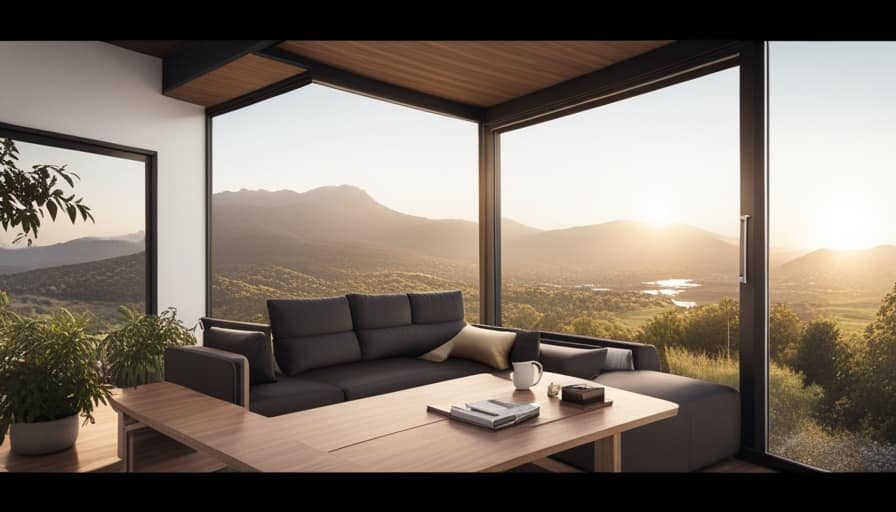
As someone living in Fresno, I have always believed in the saying ‘home is where the heart is.’ Thanks to the city’s forward-thinking housing policies, even the smallest of homes can now have a place to call their own.
In this article, we’ll explore how Fresno has embraced the tiny house movement, collaborating with advocates and implementing innovative zoning regulations. Join me as we delve into the challenges faced and the remarkable progress made towards building a thriving tiny house community in Fresno.
Key Takeaways
- Fresno has implemented housing policies and initiatives aimed at increasing access to affordable housing, including energy-efficient homes and tiny house construction.
- Collaboration with tiny house advocates is crucial for effective housing solutions, as they bring valuable insights and innovative ideas to the table.
- Zoning regulations and permitting processes in Fresno are designed to engage the community and ensure that their needs and preferences are considered.
- Fresno has created innovative tiny house communities that focus on sustainability and affordability, incorporating features such as solar panels and rainwater harvesting systems.
The Shift in Housing Policies
I’m excited to talk about the changes happening in housing policies.
One of the most pressing issues in our society today is housing affordability. Many individuals and families struggle to find affordable housing options, causing financial strain and instability.
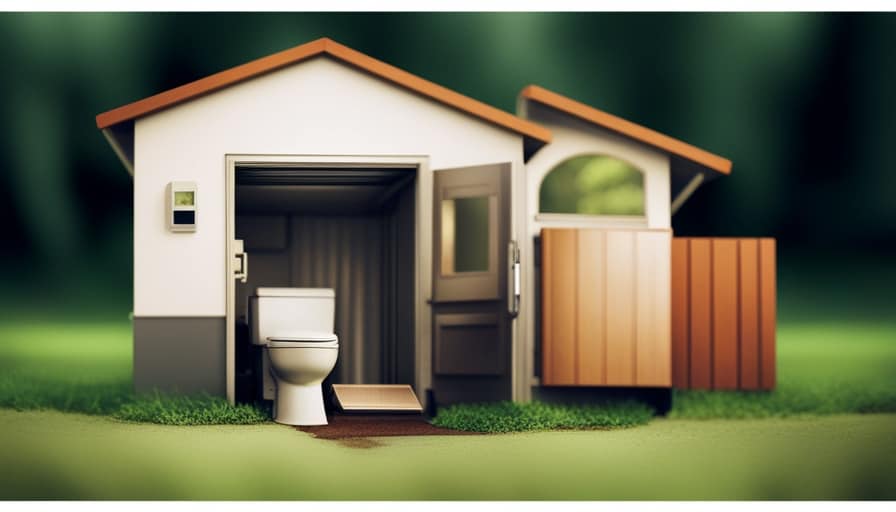
As a result, there’s been a shift in housing policies towards promoting sustainable living and increasing access to affordable housing. Governments and organizations are recognizing the importance of creating housing opportunities that are both environmentally friendly and economically viable.
This involves initiatives such as promoting energy-efficient homes, supporting the construction of tiny houses, and implementing rent control measures.
Collaborating With Tiny House Advocates
Collaborating with tiny house advocates has been crucial in implementing effective housing solutions in the city of Fresno. Through collaboration strategies and community engagement, we’ve been able to work hand in hand with advocates to address the unique challenges and opportunities that tiny houses present.
These collaborations have allowed us to tap into the knowledge and expertise of tiny house advocates, who bring valuable insights and innovative ideas to the table. We’ve engaged in open and transparent dialogues, fostering a sense of trust and understanding between all parties involved.

Zoning Regulations and Permitting Processes
Navigating the complexities of zoning regulations and permitting processes can be challenging, but it’s essential for ensuring the successful implementation of tiny house communities in the city of Fresno.
To streamline processes and make it easier for individuals and organizations to develop tiny house communities, the city of Fresno has taken steps to engage with the community and actively involve them in the decision-making process.
This includes hosting public meetings, soliciting feedback, and conducting thorough assessments of potential sites for tiny house communities. By involving the community in these processes, the city of Fresno can address any concerns or issues that may arise, while also ensuring that the needs and preferences of the community are taken into consideration.
This collaborative approach not only helps to build trust and support, but also allows for a more efficient and effective implementation of tiny house communities in the city.
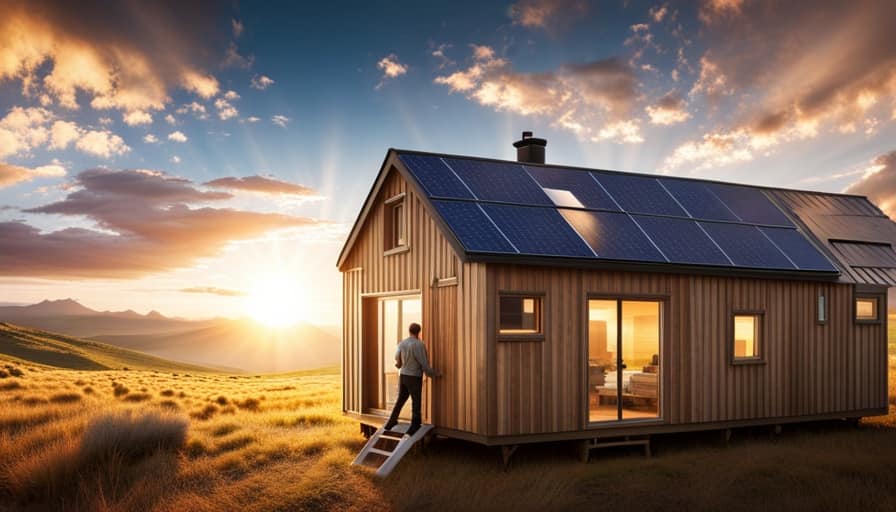
Innovative Tiny House Communities in Fresno
One innovative approach to creating tiny house communities in Fresno is through the use of sustainable materials and renewable energy sources. These communities are designed with a focus on sustainability, incorporating features such as solar panels, rainwater harvesting systems, and energy-efficient appliances. By utilizing these sustainable practices, residents can reduce their carbon footprint and live in homes that are environmentally friendly.
Additionally, these communities aim to provide affordable living options for individuals who may not be able to afford traditional housing. Through the use of smaller, more efficient spaces, the cost of construction and maintenance is reduced, making it more accessible for those on a limited budget.
These innovative tiny house communities in Fresno are paving the way for sustainable housing and promoting affordable living for all.
Transitioning into the next section, let’s explore the challenges faced in building a tiny house movement.
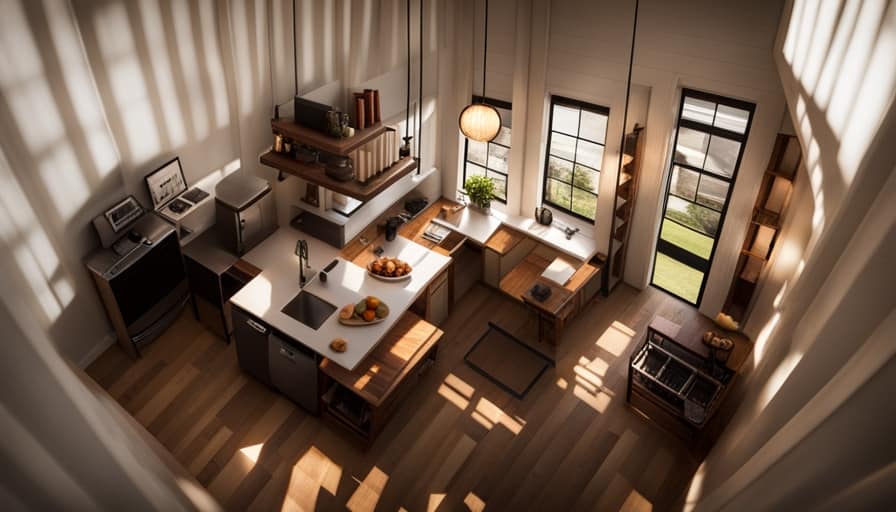
Overcoming Challenges and Building a Tiny House Movement
Confronting obstacles and working together, we can create a thriving tiny house movement in Fresno.
To overcome challenges and build a sustainable and affordable housing solution, we must first address zoning regulations. Currently, many cities have restrictions that make it difficult to build tiny houses on a permanent foundation. By advocating for changes in zoning laws, we can create more opportunities for tiny house communities.
Additionally, we need to address financing options for individuals interested in building tiny houses. Traditional lending institutions may not provide loans for these unconventional homes, so alternative financing options must be explored. Collaborating with local government, community organizations, and financial institutions can help us develop innovative solutions to overcome these challenges.
Frequently Asked Questions
How Long Does It Typically Take to Build a Tiny House?
Typically, it takes around 2-4 months to build a tiny house. The building timeline can vary based on factors like design complexity, availability of materials, and contractor availability. Cost considerations include materials, labor, and permits.
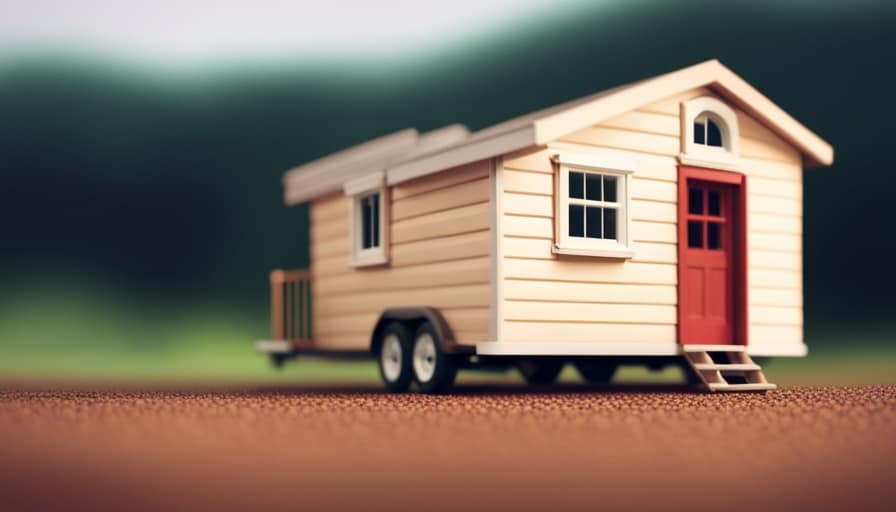
Are There Any Specific Requirements for the Size or Design of a Tiny House in Fresno?
In Fresno, specific requirements exist for the size and design of tiny houses. The city has set guidelines to ensure safety and conformity. Meeting these requirements is crucial to obtaining necessary permits and building a legally compliant tiny house.
Can I Legally Live in a Tiny House on Wheels in Fresno?
Yes, you can legally live in a tiny house on wheels in Fresno. While specific regulations may vary, other cities have implemented tiny house regulations with benefits such as affordability, sustainability, and minimal environmental impact.
How Can I Find Resources and Support for Building My Own Tiny House in Fresno?
Finding local workshops and connecting with tiny house builders in Fresno is crucial for building my own tiny house. Through thorough research and analytical thinking, I can discover resources and support to ensure a successful project.
Are There Any Financial Incentives or Grants Available for Individuals Interested in Building a Tiny House in Fresno?
There are financial assistance programs and grants available for individuals interested in building a tiny house in Fresno. It’s important to familiarize yourself with the building regulations and requirements to ensure compliance.
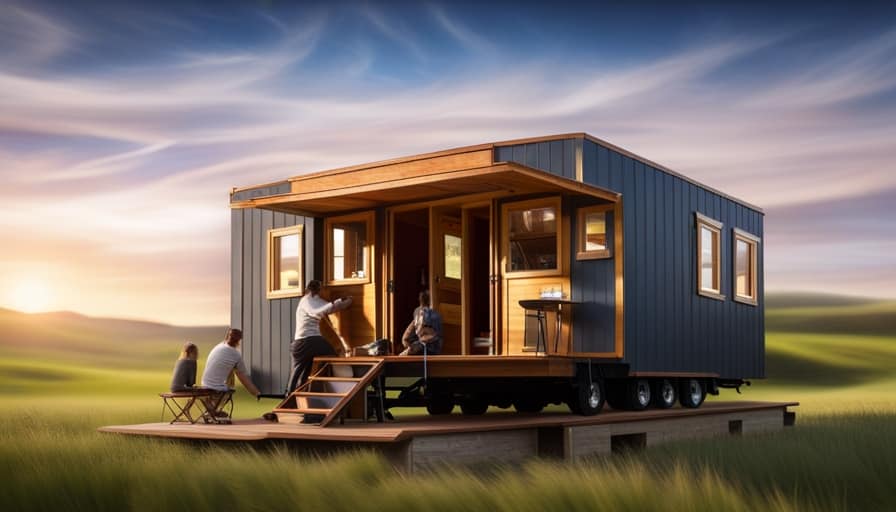
Conclusion
In conclusion, the city of Fresno has successfully embraced the tiny house movement through a shift in housing policies, collaboration with advocates, and innovative communities.
The zoning regulations and permitting processes have been streamlined to accommodate tiny house living. Despite challenges, the city has built a strong foundation for the tiny house movement to thrive.
As the saying goes, "The journey of a thousand miles begins with a single step," and Fresno has taken that step towards a more sustainable and affordable housing solution.
I’m Theodore, and I love tiny houses. In fact, I’m the author of Tiny House 43, a book about tiny houses that are also tree houses. I think they’re magical places where imaginations can run wild and adventures are just waiting to happen.
While tree houses are often associated with childhood, they can be the perfect adult retreat. They offer a cozy space to relax and unwind, surrounded by nature. And since they’re typically built on stilts or raised platforms, they offer stunning views that traditional homes simply can’t match.
If you’re looking for a unique and romantic getaway, a tree house tiny house might just be the perfect option.
Beginners Guides
How Do I Get Rid of Tiny Black Flies in My House

- Health risks associated with tiny black flies in the house
- Effective methods to prevent and control the presence of black flies in homes or gardens
I have tried every possible solution, but those annoying tiny black flies refuse to leave my house!
If you’re dealing with the same frustrating problem, don’t worry – I’ve got you covered.
In this article, I’ll share my expert knowledge on identifying these pesky bugs, understanding the causes of their infestations, and provide you with both natural and chemical remedies to banish them for good.
Say goodbye to those annoying flies and hello to a fly-free home!
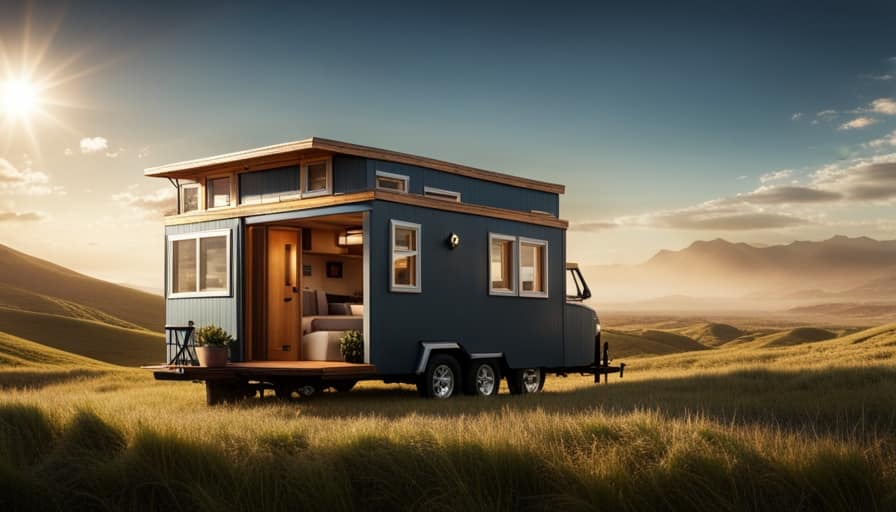
Key Takeaways
- Identify and eliminate breeding grounds by removing standing water and damp areas.
- Use natural remedies like homemade fly traps with apple cider vinegar and essential oils to repel flies.
- Consider using chemical treatments designed to kill black flies, following the instructions carefully.
- Take preventive measures to keep your house clean and free from food or organic debris to prevent future infestations.
Identifying the Tiny Black Flies
I can use a magnifying glass to examine the tiny black flies and determine their species. When it comes to differentiating between fruit flies and black flies, there are a few key characteristics to look out for.
Fruit flies are usually smaller in size, about 1/8 of an inch long, and have a tan or yellowish body with red eyes. On the other hand, black flies are slightly larger, measuring around 1/4 of an inch, and have a dark black or grayish body with dark wings.
Now, let’s move on to controlling and eliminating black flies in outdoor spaces. One effective method is to eliminate their breeding grounds by removing any standing water or damp areas where they can lay their eggs. Regularly emptying and cleaning birdbaths, flower pots, and gutters can help prevent black fly infestations.
Additionally, using insect repellents or installing fine mesh screens on doors and windows can provide some protection against these pesky pests.
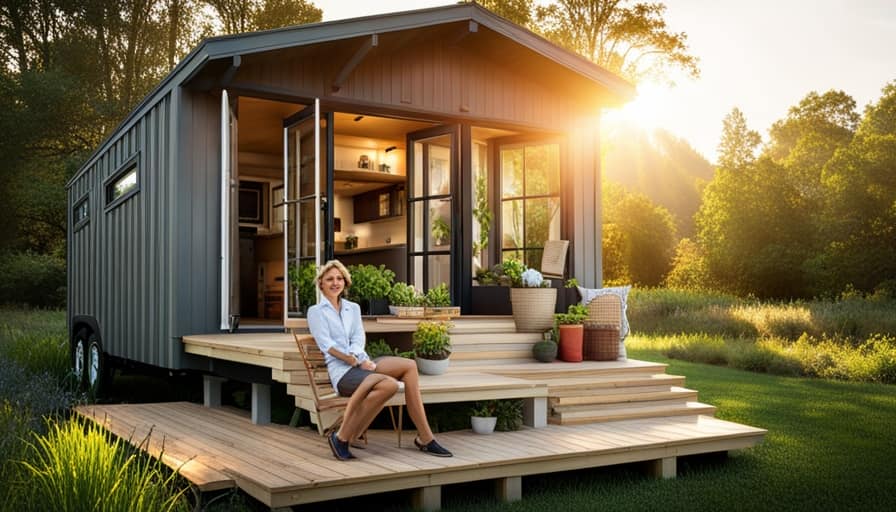
Understanding the Causes of Black Fly Infestations
To understand the causes of black fly infestations, we need to examine their preferred breeding sites and environmental conditions. These tiny pests thrive in moist and decaying organic matter, making the following places common breeding grounds for black flies:
-
Standing water: Black flies lay their eggs in standing water, such as ponds, lakes, and even puddles. It’s crucial to eliminate any stagnant water sources around your house to prevent infestations.
-
Overgrown vegetation: Black flies are attracted to dense vegetation, especially if it’s near water bodies. Trim shrubs, mow your lawn regularly, and remove any overgrown plants to discourage black flies from breeding.
-
Moist organic matter: Black flies lay their eggs in decomposing leaves, grass clippings, and other organic debris. Keep your yard clean and free of debris to reduce the likelihood of black fly infestations.
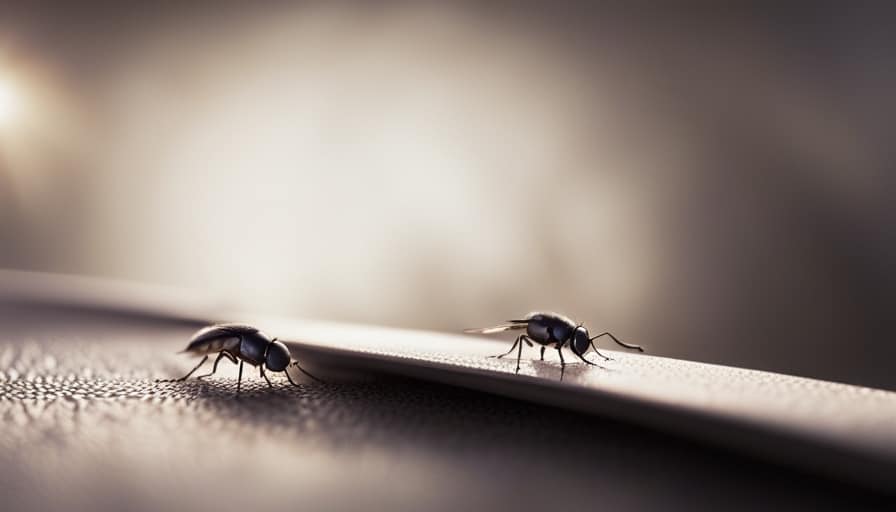
Understanding these common breeding grounds can help you identify and eliminate the causes of black fly infestations, keeping your home fly-free and comfortable.
Natural Remedies to Eliminate Tiny Black Flies
With a combination of proper sanitation and natural remedies, you can effectively eliminate tiny black flies from your house. One effective natural remedy is making homemade fly traps. These traps can be made using common household items such as apple cider vinegar, dish soap, and a plastic bottle. Simply cut the bottle in half, pour a mixture of apple cider vinegar and dish soap into the bottom half, and place the top half of the bottle inverted into the bottom half. The flies will be attracted to the scent of the vinegar, but the dish soap will prevent them from escaping. Another natural remedy is using essential oils for fly control. Oils such as lavender, peppermint, and eucalyptus have strong scents that repel flies. Simply mix a few drops of your chosen oil with water and spray it around areas where flies are present. By incorporating these natural remedies into your fly control routine, you can effectively get rid of tiny black flies in your house.
| Homemade Fly Traps | Essential Oils for Fly Control |
|---|---|
| – Apple cider vinegar and dish soap mixture in a plastic bottle | – Lavender, peppermint, and eucalyptus oils |
| – Flies are attracted to the vinegar scent but trapped by the soap | – Mix a few drops with water and spray in affected areas |
| – Simple and cost-effective solution | – Oils have strong scents that repel flies |
| – Dispose of trapped flies regularly | – Repeat application as needed |
Chemical Treatments for Getting Rid of Black Flies
By using chemical treatments, you can effectively eliminate black flies from your house. Here are three options to consider:
-
Chemical insecticides: These products are specifically designed to kill insects, including black flies. Look for insecticides that are labeled for use against flies and follow the instructions carefully. Apply the insecticide in areas where black flies are commonly found, such as around windows, doors, and other entry points.
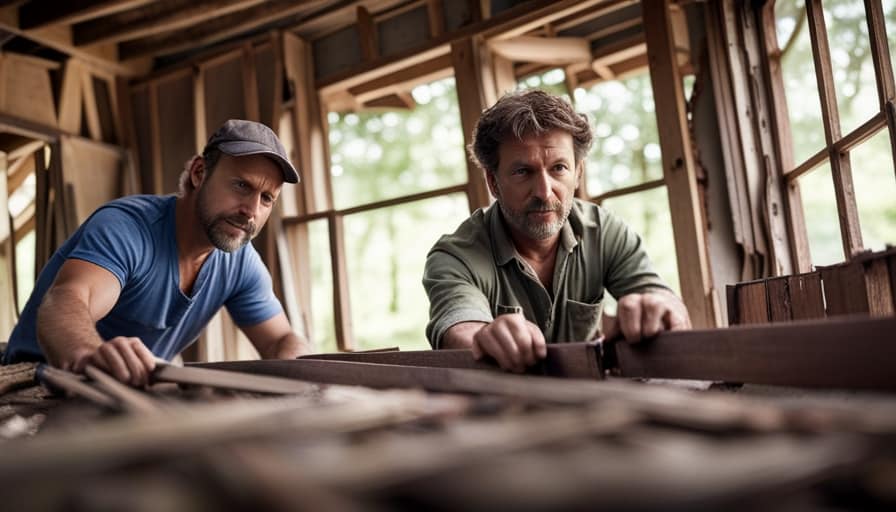
-
Fly traps: There are chemical-based fly traps available that attract and capture black flies. These traps use a combination of chemicals and pheromones to lure the flies in and prevent them from escaping. Place the traps in areas where black flies are present, such as near garbage cans or in the kitchen.
-
Professional exterminator: If you’re dealing with a severe infestation or if chemical treatments haven’t been effective, it may be best to call a professional exterminator. They have access to stronger chemicals and can provide a targeted approach to eliminate black flies from your house.
Remember to always read and follow the instructions on chemical insecticides and traps, and consider the help of a professional if needed.
Preventing Future Infestations of Tiny Black Flies
My best advice for preventing future infestations of tiny black flies in my house is to maintain proper sanitation and eliminate potential breeding grounds.
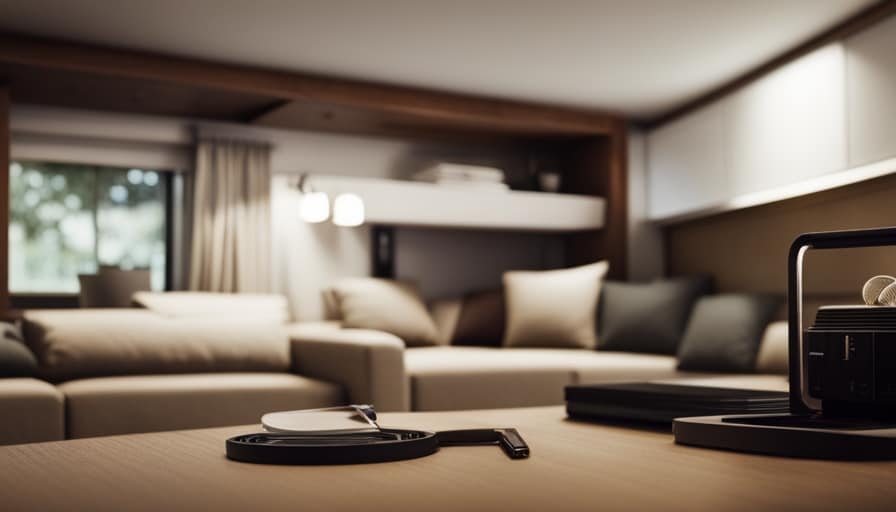
To maintain a fly-free environment, it’s important to keep your house clean and free from any food or organic debris. Make sure to regularly clean your kitchen, especially the countertops, sinks, and garbage disposal areas. Keep all food stored in airtight containers and promptly clean up any spills or crumbs.
Additionally, it’s crucial to identify and eliminate common breeding grounds for black flies in homes. These include standing water, damp areas, and overwatered plants. Regularly check for any leaks or moisture issues and fix them promptly.
Frequently Asked Questions
Can These Tiny Black Flies Harm Humans or Pets?
I’m not an expert, but I can share that tiny black flies in the house might be annoying, but they usually don’t harm humans or pets. It’s always a good idea to take preventive measures to control their presence.
Are There Any Specific Regions or Climates Where These Black Flies Are More Common?
In certain regions and climates, these pesky black flies tend to be more common. Understanding their preferences can help in devising effective strategies to keep them at bay.
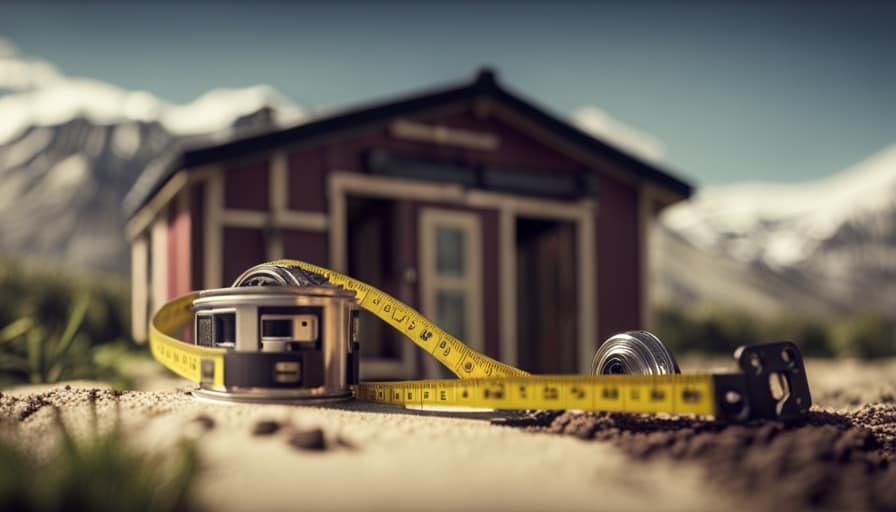
Can These Tiny Black Flies Cause Damage to Plants or Food?
Yes, these tiny black flies can cause damage to indoor plants as they lay their eggs in the soil. They can also contaminate stored food by landing on it and leaving behind bacteria.
How Long Does It Usually Take for Natural Remedies to Effectively Eliminate Black Flies?
On average, natural remedies can effectively eliminate black flies within a few days. However, the exact time may vary depending on the severity of the infestation and the specific remedies used.
Are There Any DIY Traps or Baits That Can Be Used to Catch and Eliminate These Tiny Black Flies?
There are several DIY fly traps and effective baits that can be used to catch and eliminate those pesky tiny black flies. Let me share some knowledge and details on how you can tackle this issue.
Conclusion
So there you have it, a plethora of methods to bid farewell to those pesky tiny black flies that have invaded your humble abode.
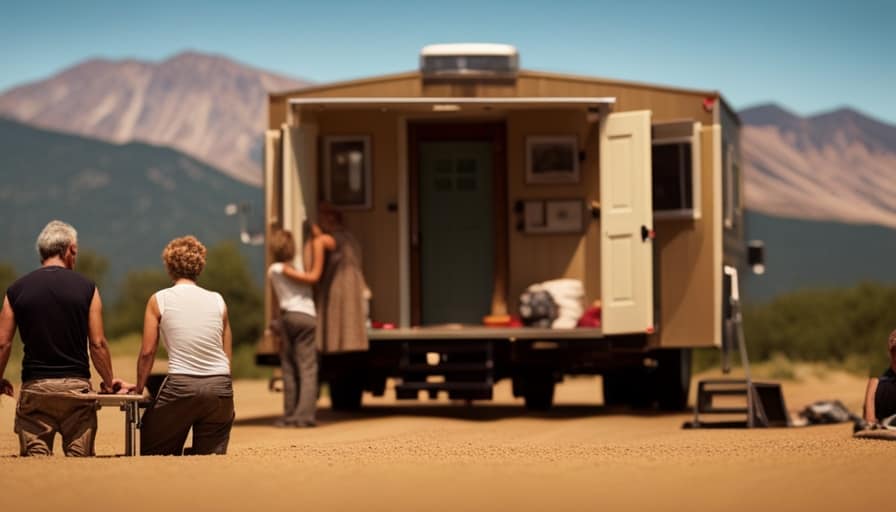
From natural remedies to chemical treatments, we’ve covered it all.
Now, armed with this knowledge, you can take control of your home and ensure these unwelcome guests never return.
Happy fly-free living!
I’m Theodore, and I love tiny houses. In fact, I’m the author of Tiny House 43, a book about tiny houses that are also tree houses. I think they’re magical places where imaginations can run wild and adventures are just waiting to happen.
While tree houses are often associated with childhood, they can be the perfect adult retreat. They offer a cozy space to relax and unwind, surrounded by nature. And since they’re typically built on stilts or raised platforms, they offer stunning views that traditional homes simply can’t match.
If you’re looking for a unique and romantic getaway, a tree house tiny house might just be the perfect option.
Beginners Guides
How Do I Get Rid of Tiny Bugs in My House

I have pests in my home that are causing me frustration! They are like small intruders that are appearing all over the place. However, do not worry, as I have conducted thorough research and found effective solutions to eliminate these bothersome pests.
In this article, I’ll guide you through identifying the types of bugs, understanding the causes of infestations, and providing natural and chemical remedies to eliminate them.
Say goodbye to those unwelcome guests and hello to a bug-free home!
Key Takeaways
- Identifying the specific pest by observing droppings or behavior is crucial in getting rid of tiny bugs in the house.
- Proper sanitation practices, such as keeping the kitchen and dining areas clean, are important in preventing bug infestations.
- Natural remedies like herbal insecticides and essential oils can be effective in deterring bugs without the use of harsh chemicals.
- Regular cleaning, sealing cracks, and maintaining a tidy home are essential in preventing future bug infestations.
Identifying the Types of Tiny Bugs in Your House
I can easily identify the types of tiny bugs in my house by observing their physical characteristics and behavior. One of the most common signs of an infestation is the presence of droppings or excrement. Different types of bugs leave different types of droppings, which can help determine the specific pest in your house.
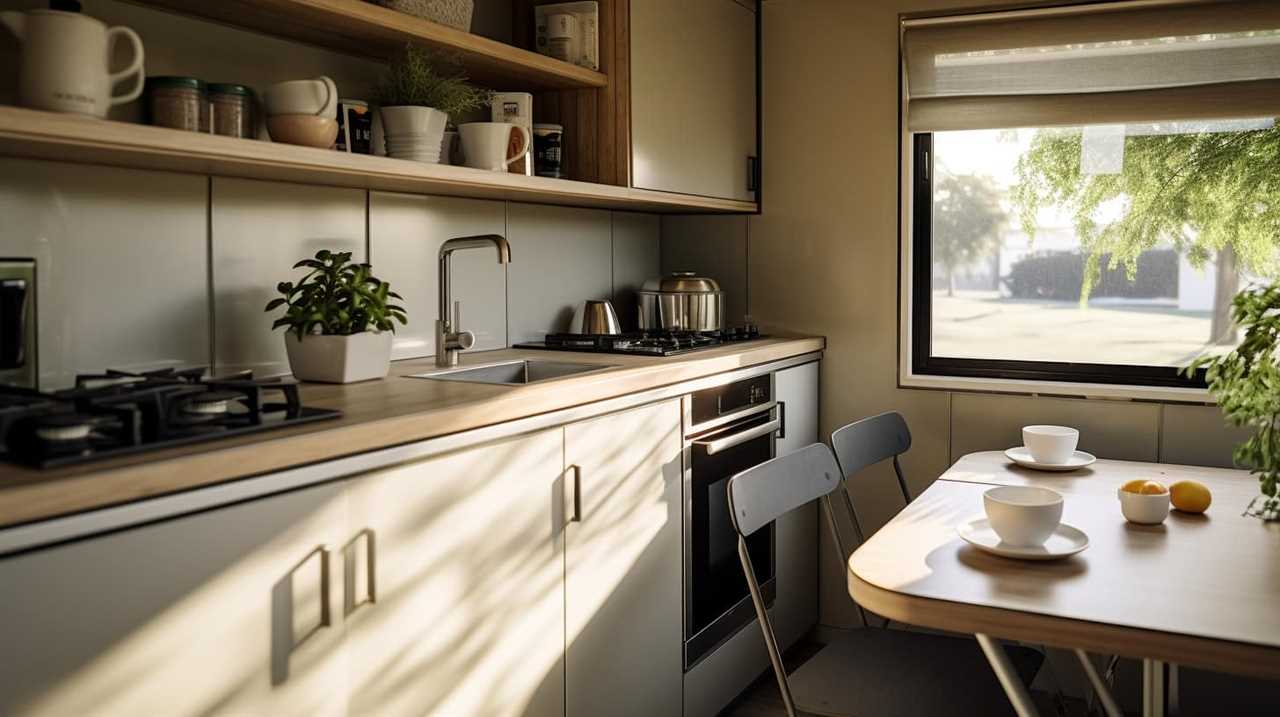
Additionally, observing the behavior of the bugs can provide valuable information. Some bugs are more active during the day, while others are nocturnal. Some bugs may prefer certain areas of the house, such as the kitchen or bathroom.
If you’re unsure about the type of bug in your house, it’s advisable to consult with professional exterminators who’ve the expertise to accurately identify and eliminate the pests.
Understanding the Common Causes of Bug Infestations
One of the most common causes of bug infestations is a lack of proper sanitation practices in the home. Understanding bug behavior and knowing their common household bug habitats can help prevent infestations.
Bugs are attracted to food sources, so it’s important to keep the kitchen and dining areas clean and free of crumbs and spills. Regularly emptying and cleaning garbage cans can also deter bugs from entering the home.

Additionally, bugs thrive in warm and moist environments, so it’s important to fix any leaks or damp areas in the house. Cluttered spaces provide hiding spots for bugs, so keeping the home organized and decluttered can help minimize their presence.
Natural Remedies to Get Rid of Tiny Bugs in Your House
To effectively eliminate tiny bugs in your house, try using natural remedies with ingredients such as vinegar and essential oils. Natural remedies are a great option for those who prefer non-toxic solutions and want to avoid harsh chemicals.
One effective natural remedy is using herbal insecticides. These insecticides are made from plant-based ingredients and can be sprayed in areas where bugs are commonly found, such as corners, cracks, and crevices.
Another natural remedy to consider is essential oils. Certain essential oils, such as peppermint, lavender, and tea tree oil, have insect-repellent properties. Simply mix a few drops of the essential oil with water and spray it around your house to deter bugs.
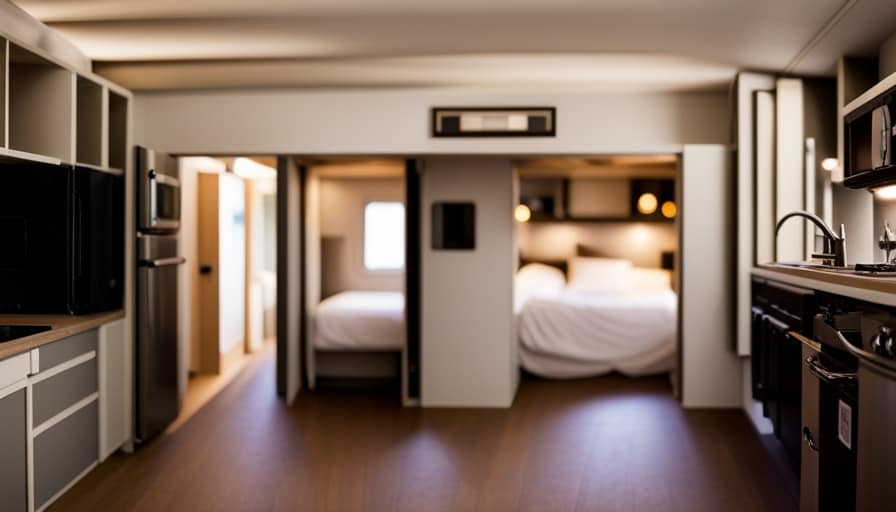
These natural remedies can be a safe and effective way to get rid of tiny bugs in your house.
Chemical Treatments for Eliminating Tiny Bugs
There are several effective chemical treatments available to eliminate tiny bugs in your house. When it comes to pest control methods, using insecticides is a common and efficient approach. There are various types of insecticides on the market, each with its own advantages and disadvantages.
It’s important to compare different insecticides to determine which one is best suited for your needs. Some insecticides target specific bugs, while others have a broad spectrum of effectiveness. Additionally, consider the application method and the duration of effectiveness. Some insecticides require direct contact with the bugs, while others can be used as a residual treatment.
It’s also essential to follow the safety instructions provided by the manufacturer when using chemical treatments to ensure the well-being of both humans and pets in your home.

Preventing Future Bug Infestations in Your Home
I’ll make sure to regularly clean and seal any cracks in my house to keep bugs from coming in. Effective cleaning techniques are crucial in preventing bug infestations and creating a bug-free environment. Maintaining a clean and tidy home is essential to minimize the presence of bugs. Regularly vacuuming carpets and upholstery, sweeping and mopping floors, and wiping down surfaces will help eliminate any crumbs or food particles that may attract bugs. Additionally, proper food storage is essential to prevent bugs from being attracted to your kitchen. Keeping food in sealed containers and promptly cleaning up spills or crumbs will deter bugs from entering your home. Regularly inspecting and repairing any cracks or gaps in windows, doors, and walls will also help prevent bugs from finding their way inside.
| Cleaning Techniques | Maintenance Tips |
|---|---|
| Vacuum carpets and upholstery | Inspect and repair cracks or gaps |
| Sweep and mop floors | Properly store food to deter bugs |
| Wipe down surfaces | Regularly clean and seal cracks |
| Dispose of trash regularly | Keep a tidy and clutter-free home |
Frequently Asked Questions
Can These Tiny Bugs Cause Any Harm to Humans or Pets?
I’m not sure about the specific bugs in your house, but some tiny bugs can cause harm to humans or pets. It’s important to address the bug infestation promptly to protect your health and take preventive measures to keep them out.
How Long Does It Typically Take for Natural Remedies to Effectively Get Rid of Tiny Bugs?
It typically takes a few weeks for natural remedies to effectively eliminate tiny bugs. However, it’s important to note that results may vary. As for side effects, natural remedies are generally safe for humans and pets.
What Are Some Signs That Indicate a Bug Infestation in the House?
Signs of a bug infestation in the house include seeing live or dead bugs, finding their droppings or eggs, and noticing damage to furniture or walls. Preventing bug infestations involves keeping a clean and tidy home, sealing entry points, and using insect repellents.
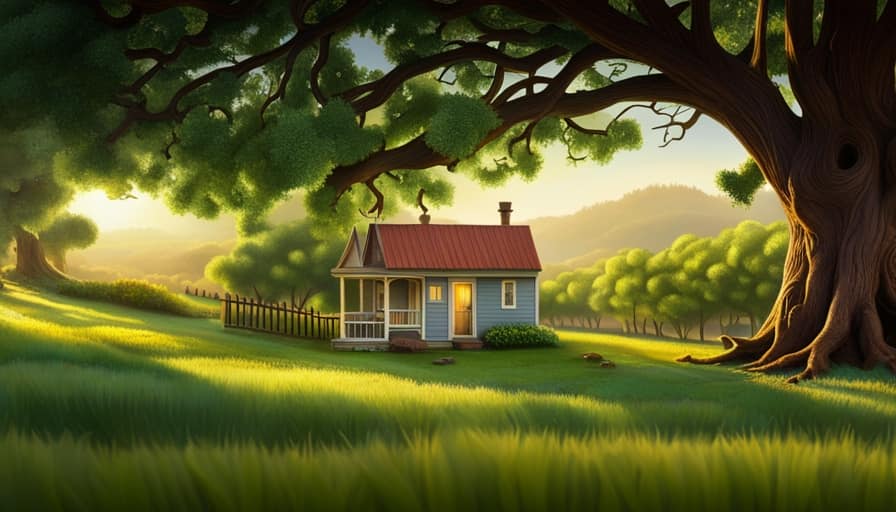
Are There Any Specific Areas in the House Where These Tiny Bugs Are Commonly Found?
In my experience, tiny bugs tend to hide in common areas like kitchen cabinets, bathrooms, and near windows. To prevent them, I recommend regular cleaning, sealing cracks, and keeping food stored properly.
Can Certain Weather Conditions or Changes in the Environment Attract These Tiny Bugs Into the House?
Certain weather conditions or changes in the environment can attract these tiny bugs into the house. Factors like warm and humid weather, open windows, and presence of organic matter can make your home more inviting for them.
Conclusion
In conclusion, while it can be frustrating to deal with tiny bugs in your house, there are effective ways to get rid of them.
By identifying the types of bugs and understanding the common causes of infestations, you can take natural or chemical treatments to eliminate them.

Additionally, taking preventive measures can help to avoid future bug infestations.
Remember, with the right knowledge and strategies, you can create a bug-free environment in your home.
I’m Theodore, and I love tiny houses. In fact, I’m the author of Tiny House 43, a book about tiny houses that are also tree houses. I think they’re magical places where imaginations can run wild and adventures are just waiting to happen.
While tree houses are often associated with childhood, they can be the perfect adult retreat. They offer a cozy space to relax and unwind, surrounded by nature. And since they’re typically built on stilts or raised platforms, they offer stunning views that traditional homes simply can’t match.
If you’re looking for a unique and romantic getaway, a tree house tiny house might just be the perfect option.
-

 Beginners Guides2 weeks ago
Beginners Guides2 weeks agoHow To Buy A Tesla Tiny House
-

 Energy Efficiency2 months ago
Energy Efficiency2 months agoBest Tiny Homes For Cold Climates
-

 Beginners Guides1 week ago
Beginners Guides1 week agoTiny House Nation Where Are They Now Stephanie
-

 Tiny House Resources (e.g., legalities, cost, insurance, FAQs)2 months ago
Tiny House Resources (e.g., legalities, cost, insurance, FAQs)2 months agoDo Tiny Homes Need Planning Permission?
-

 Beginners Guides3 weeks ago
Beginners Guides3 weeks agoFrom The Show Tiny House Nation How Many Keep Their Tiny House?
-

 Beginners Guides2 months ago
Beginners Guides2 months agoUsing a Climbing Net For Treehouse Construction
-

 Beginners Guides2 months ago
Beginners Guides2 months agoHow to Build a Treehouse Without Drilling Into the Tree
-

 Beginners Guides3 weeks ago
Beginners Guides3 weeks agoTiny House Nation Who Pays For The Houses




